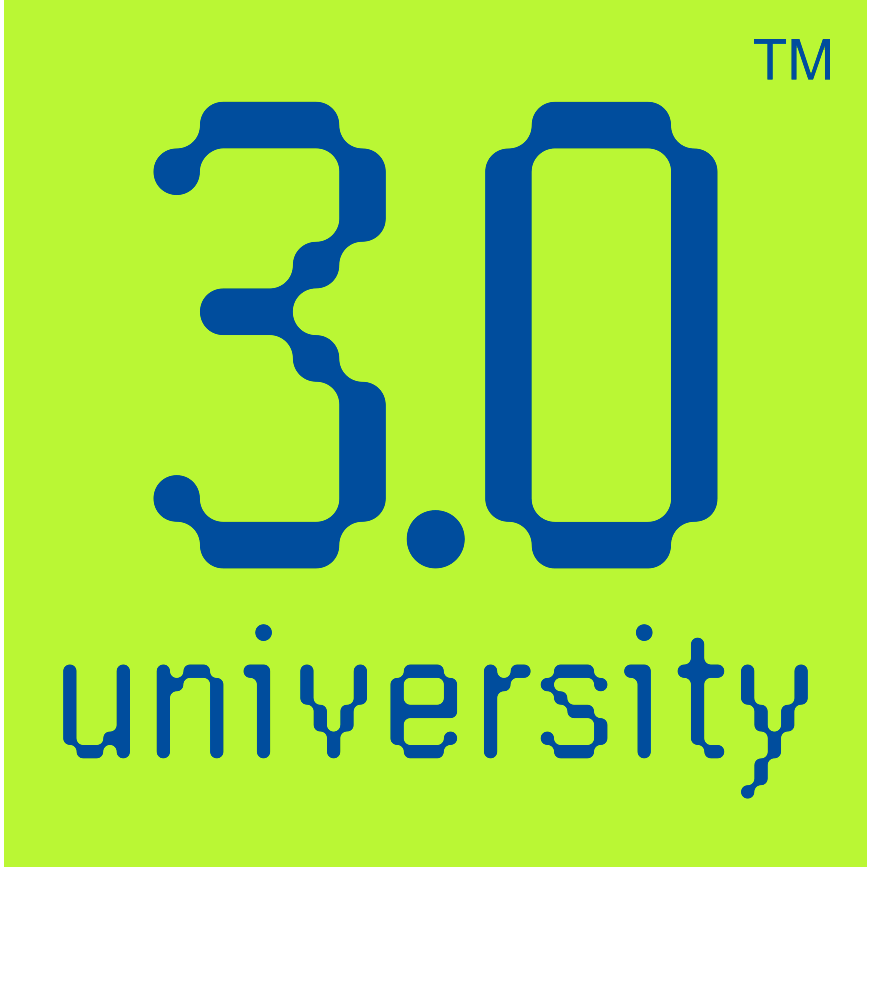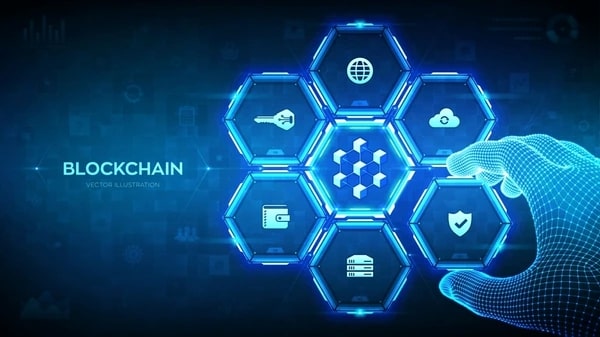
Top 5 Blockchain Platforms in 2025
- Posted by 3.0 University
- Categories Blockchain
- Date January 2, 2025
- Comments 0 comment
Dealing with the changing world of blockchain tech needs a clear understanding of the platforms that may shape the future. As we near 2025, the rise of different blockchain platforms calls for a close look at what they can do, their features, and how they might influence fields from finance to supply chain management.
This exploration is important because of the rapid growth of decentralized apps and the growing need for better scalability, security, and interoperability among different technologies.
By examining major players—each with distinct strengths and weaknesses—we can create a detailed comparison that shows the top and the best blockchain platforms out there.
This study will clarify the unique characteristics of these technologies and consider their implications for businesses and developers, assisting them in selecting and utilizing blockchain solutions prudently in the upcoming years.
This comparison clearly illustrates the complex structure relevant to these platforms.
Overview of the significance of blockchain technology in 2025
In the fast-changing world of digital technology, knowing what blockchain technology means will be very important to different industries by 2025.
Organizations are starting to see the flaws in traditional systems, and the secure, decentralized features of blockchain provide answers to big problems related to data trust, integrity, and transparency.
With blockchain, users can confirm transactions directly without needing a middleman, making data more accessible and encouraging teamwork. Moreover, the projected capitalization of new technologies like artificial intelligence and the Internet of Things (IoT) in blockchain will significantly enhance productivity, steering progression to new developments in various fields.
Consequently, the importance of blockchain in 2025 outspreads beyond financial transactions; it plays a decisive role in healthcare and , digital identity verification, supply chain management, transmuting the acuity of accountability and efficiency in a digital economy.
This significant role underscores the importance of stakeholders understanding the primary blockchain platforms that are driving this significant transformation.
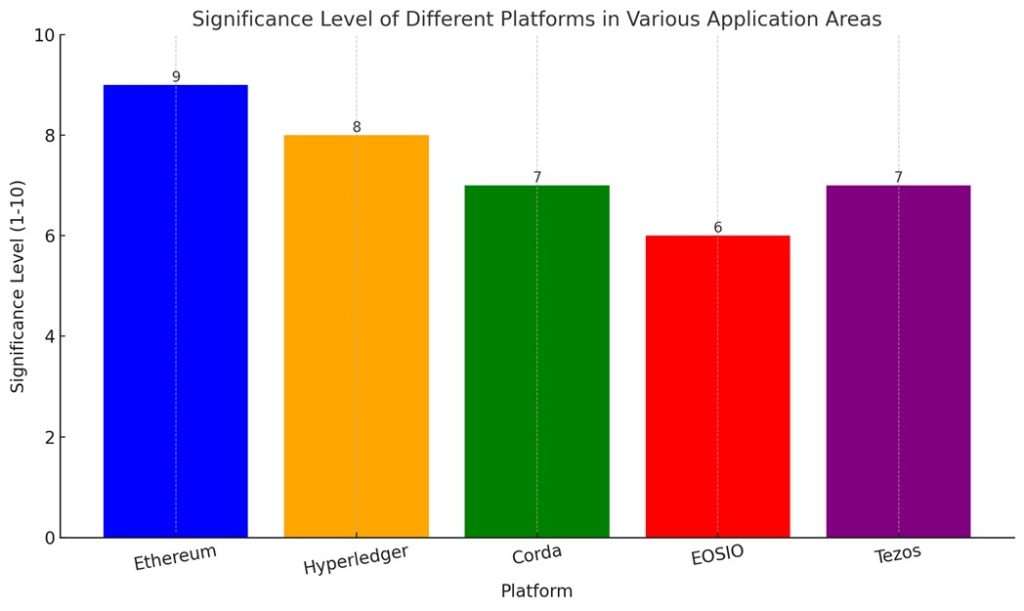
This chart illustrates the significance levels of various platforms across different application areas. It ranks platforms like Ethereum, Hyperledger, Corda, EOSIO, and Tezos on a scale of 1 to 10, with Ethereum being the highest rated at 9, and EOSIO the lowest at 6.
Key Features of Leading Blockchain Platforms
The growth of blockchain tech shows the rise of platforms that focus on scalability, security, and interoperability. For example, Ethereum’s Layer 2 solution, Optimism, shows this aim by cutting down transaction fees and boosting blockchain scalability.
Moving transactions away from the main Ethereum chain facilitates the use of current apps and enhances user experience.
In a similar way, Polkadot’s unique parachain structure underlines the platform’s focus on high transaction volume, handling up to 3,000 transactions per second (TPS).
This fast speed not only improves user experience but also makes Polkadot a strong player among the top blockchain platforms available today.
These significant features highlight a broader trend in the blockchain field, where platforms cater to the demands of a burgeoning digital economy, thereby enhancing compatibility among diverse applications. For Lane Axis, choosing Optimism illustrates how smart decisions in blockchain development address current tech needs, helping platforms stay competitive.
Comparative analysis of scalability, security, and interoperability among the top platforms
When examining the new blockchain landscape in terms of scalability, security, and interoperability, some significant platforms stand out due to their distinctive designs and features. For example, Ethereum has improved with its move to Ethereum 2.0, using proof-of-stake methods that boost scalability while keeping strong security features, allowing for more transactions without harming network integrity.
On the other hand, Algorand supports rapid transactions and low delays using its special consensus protocol, addressing scalability issues while also ensuring security with cryptographic tools.
Still, the problem of making different blockchain systems work together remains.
This is where cross-chain features are essential, as platforms such as Polkadot show progress toward a more connected blockchain world by letting separate networks talk and work together.
The review of these platforms highlights an important point where scalability, security, and interoperability meet, influencing the direction of blockchain technologies in 2025 and beyond.
Blockchain Platforms Comparison
Platform | Scalability | Security | Interoperability |
Ethereum | 2,500 TPS | Robust (PoW transitioning to PoS) | Medium (with Layer 2 solutions) |
Binance Smart Chain | 3,000 TPS | Moderate (PoSA) | High (Native support for Ethereum assets) |
Solana | 65,000 TPS | High (Proof of History) | Medium (Bridge solutions available) |
Cardano | 1,000 TPS (with future upgrades for 100,000 TPS) | High (Ouroboros PoS algorithm) | High (supports cross-chain transactions) |
Polkadot | 1,000 TPS (theoretically up to 100,000 TPS with parachains) | High (shared security model) | Very High (designed for cross-chain integration) |
Comparative Analysis of Blockchain Platforms
Use Cases and Applications of Blockchain Technologies
The capability of blockchain technologies to alter numerous sectors is much vividly clearer now, showing substantial upgrades and enhancements in efficiency, security and transparency. Myriad and diverse industries, like supply chain management and finance, are employing blockchain to improve their operations and make processes smoother.
For example, smart contracts are a new way to automatically manage agreements, which helps reduce delays and lower risks.
Ostensibly, the impression or, in the scheme of establishing the idea that “Blockchain is changing global trade and commerce by fixing problems, increasing transparency, and boosting security in supply chains” highlights how blockchain’s capability to build trust in transactions represents a significant shift in the way companies operate.
Besides, the structure of the decentralized blockchain enables real-time tracking of assets, which not only improves transparency and accountability but also, in turn, yields more responsive supply chains.
Therefore, the growth of blockchain platforms is crucial to influencing the future of many industries as they look at and apply these new technologies in 2025 and later.
Examination of Real-world Applications Benefiting the Industries: The Top Blockchain Technologies 2025
As blockchain technology keeps getting better, many industries are working to use its advantages for better transparency, security, and efficiency.
In 2025, using blockchain in supply chain management is expected to change things a lot by allowing real-time tracking of products from where they start to where consumers get them.
This ability not only makes tracking easier but also helps lower fraud and improves how operations run. Blockchain is likely to secure patient data sharing in the healthcare field, ensuring privacy protection and facilitating access to crucial information across networks.
Additionally, the financial services sector is expected to face major changes with decentralized finance (DeFi) platforms, which cut out middlemen and make transactions easier.
All these uses highlight how important it is to pick the right blockchain platform for specific industry needs, which can improve how operations run and build more trust among people in the system.
Platforms such as Algorand effectively articulate this shift towards practical applications, catering to a variety of needs.
Conclusion
Given how blockchain technology is changing, 2025 platforms must be strong technically and flexible to new trends and user needs. A look at the leading blockchain technologies shows clear traits that help with growth, security, and ease of use across different fields.
By comparing these platforms, we see how critical it is to have systems that work together and share resources, as indicated by the findings from [citeX]. Also, the rising use of better consensus methods and faster transactions, as shown in [extractedKnowledgeX], demonstrates how platforms like Ethereum and Algorand are preparing for what is next.
In the end, picking a blockchain platform will depend on the specific needs of applications and the goals of organizations, making it crucial for stakeholders to have the right information to work through this complicated field.
The focus on encouraging new ideas and fixing issues will surely shape how blockchain affects global industries in the future.
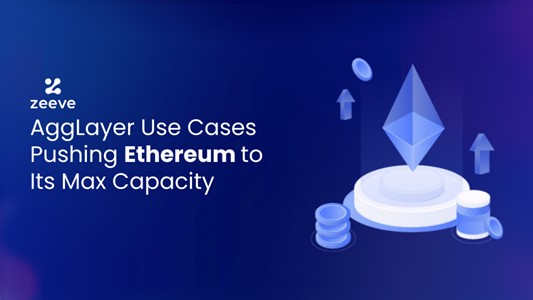
Image1. Visualization of AggLayer’s impact on Ethereum capacity
Summary of the importance of understanding blockchain platforms for future technological advancements
As technology keeps moving forward quickly, it is more important for people and organizations to understand blockchain platforms well in order to cope with this changing area.
What’s more intriguing is that Blockchain technology strengthens the process by supporting many practices, from cryptocurrencies to decentralized finance (DeFi) and smart contracts, each of which has unique features and potential uses.
By taking a closer look at different platforms—like Ethereum, Algorand, and others mentioned in the talk about the best blockchain technologies for 2025—stakeholders can discover and embrace the solutions match their goals and needs.
This kind of comparison helps in making informed choices and encourages new ideas by showing new trends that might change industries.
Visual tools, such as the diagram in [citeX], effectively illustrate the intricate nature of these platforms and underscore the significance of scalability, security, and interoperability.
Therefore, a solid understanding of blockchain platforms not only helps organizations but also sparks future technological progress that can change current systems.
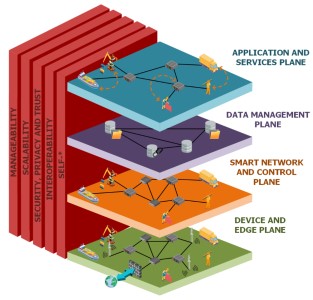
Empower your career with 3.0 University next-gen online courses in Web3 technologies. Explore the AI-Powered Ethical Hacking Program, dive into advanced cybersecurity, and master Blockchain and AI innovations—all with global certifications.
You may also like

Blockchain and Crypto Education Boom in India

Career Opportunities in Blockchain for 2025

